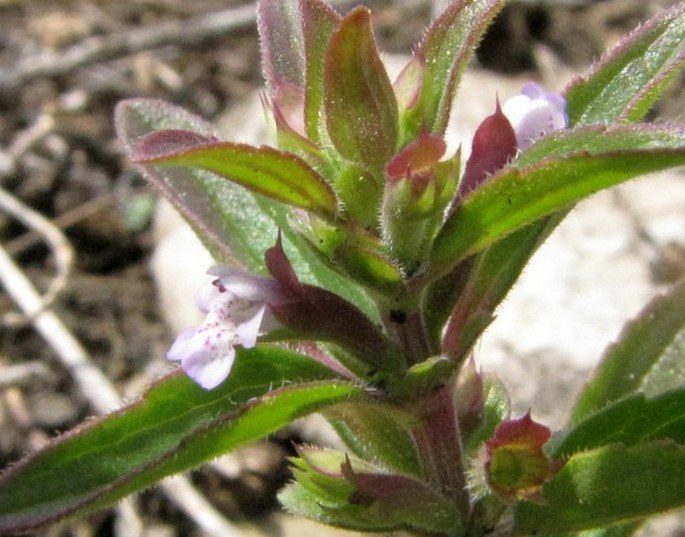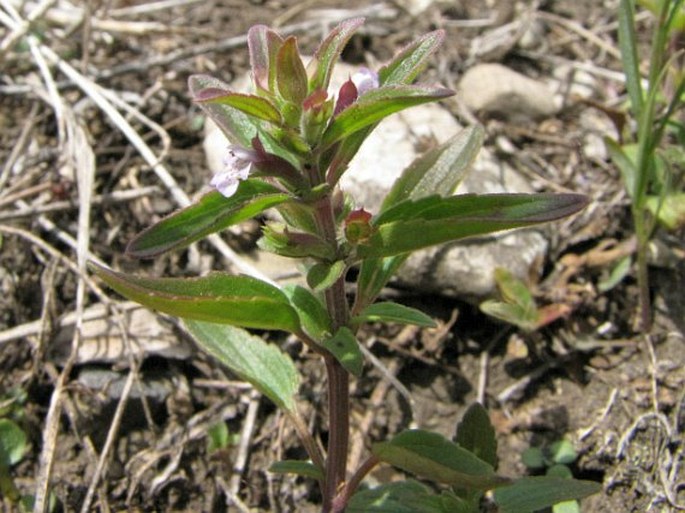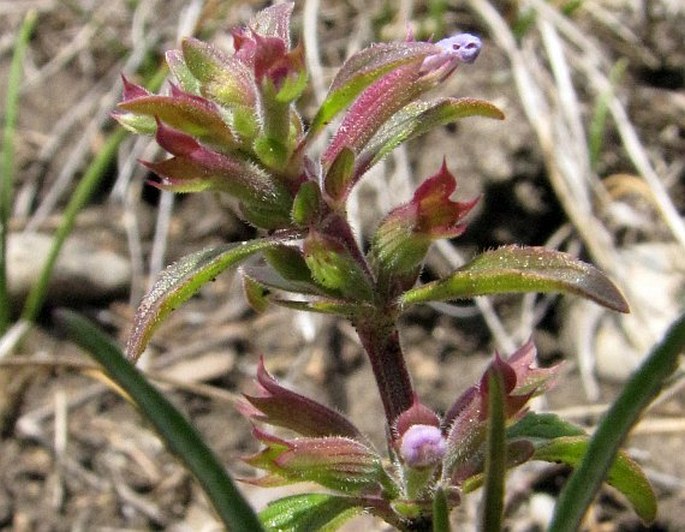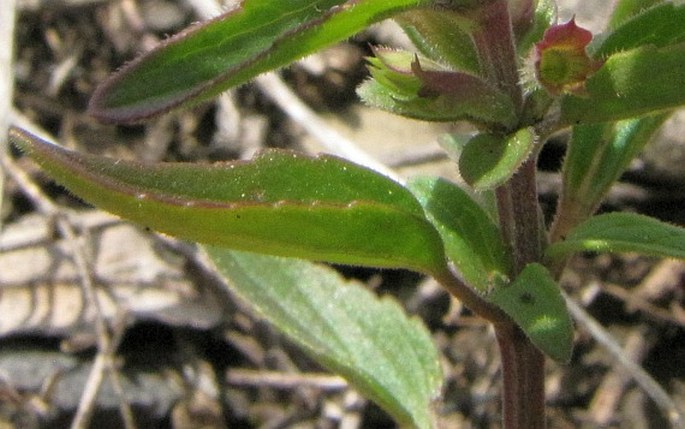Syn.: Dracocephalum thymifolium Houtt., Moldavica thymiflora (L.) Rydb., Zornia parviflora Moench
Family: Lamiaceae Martinov

Distribution: This plant is native in eastern Europe, western and central Asia, sometime introduced to central and northern Europe and considered exotic in North America. It is found in southern parts of Canada and in states of Idaho, Montana, North Dakota, Wyoming, Utah and Arizona.
Ecology: Found in grasslands, rocky slopes, also in areas disturbed by humans, and as it is not invasive it occurs in certain areas only. Blooms in spring.
Description: Annual or biennial herb, 10–60 cm tall, from a taproot. Stems erect, branched or unbranched, minutely hairy, 4-angled. Leaves opposite, lower ones ovoid, upper ones narrowly ovoid to narrowly oblong, 1–3 cm long, 1 cm wide, bluntly toothed, finely pubescent, short petioles. Inflorescence an open spike; bracts leaf-like, bluntly toothed; corollas tubular, blue or purplish, 2-lipped, only slightly protruding from green calyx, upper lip hood-like, lower lip spotted dark purple, 6–8 mm long. Fruit is a nutlet, in clusters of 4, egg-shaped, smooth.



These images were taken in Canada, Alberta, Calgary, Fish Creek Provincial Park, Bebo Grove (May 2012).


